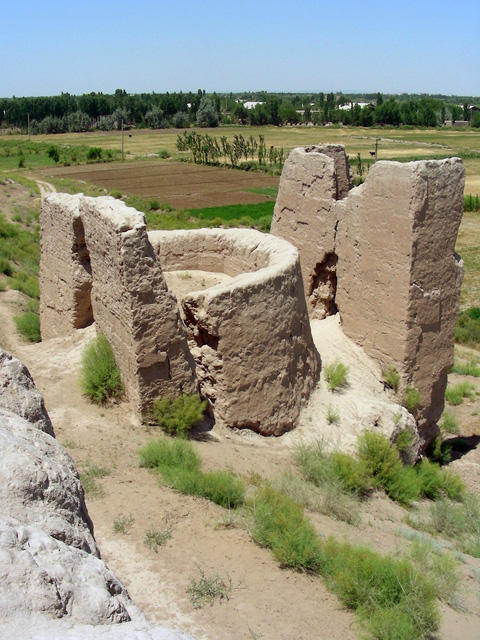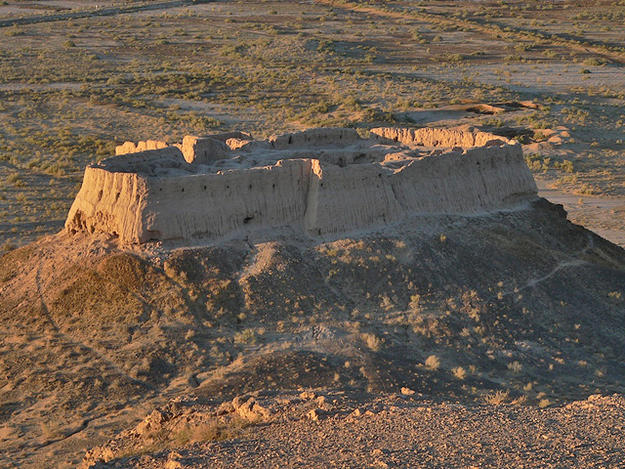Desert Castles of Ancient Khorezm
2010 World Monuments Watch
Along the many tributaries of the Amu-dar’ya River, the Desert Castles of Ancient Khorezm emerge from the arid, sandy plains of central Uzbekistan. The surrounding land constitutes one of the largest oases in Central Asia and offered fertile agricultural soil to the area’s first settlers. The first fortifications began to appear in the 7th century B.C., crafted from the region’s raw earth using a combination of mud brick, cob, and pakhsa. The sophisticated process of creating the material allowed these structures to maintain their structural stability while allowing for massive walls, gates, towers, and architectural details including vaulted corridors, decorative niches, and arrow slots. This landscape encompasses a number of desert castles, each in varying states of decay. In addition to the fortresses, the fortified town of Gul’dursun-kala and the Royal Residence of Toprak Kala are extremely significant historical and architectural structures created during the 2nd and 12th centuries A.D., respectively. Seemingly formed straight from the earth, the façades of the castles and fortifications have softened through centuries of exposure to wind and other natural elements. Today, cotton cultivation has salinized the soil surrounding the structures, eating away at the foundations and compounding the deterioration left by time and the environment. Comprehensive management and conservation plans are necessary to ensure the preservation of these ancient castles.



